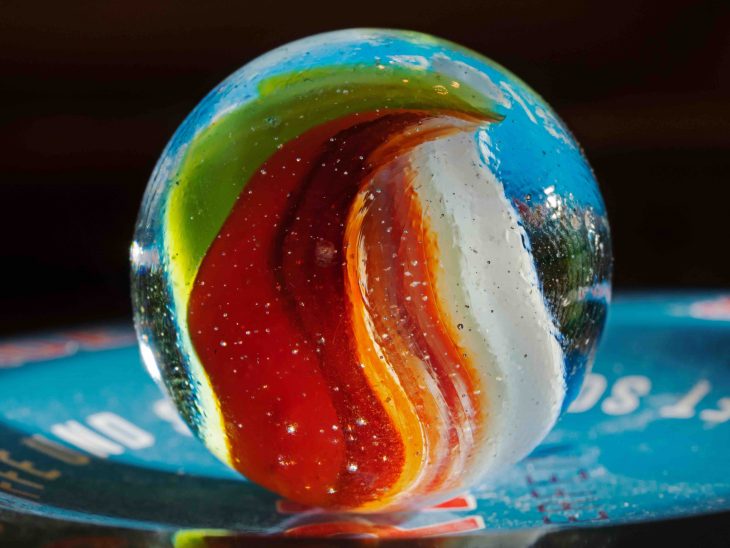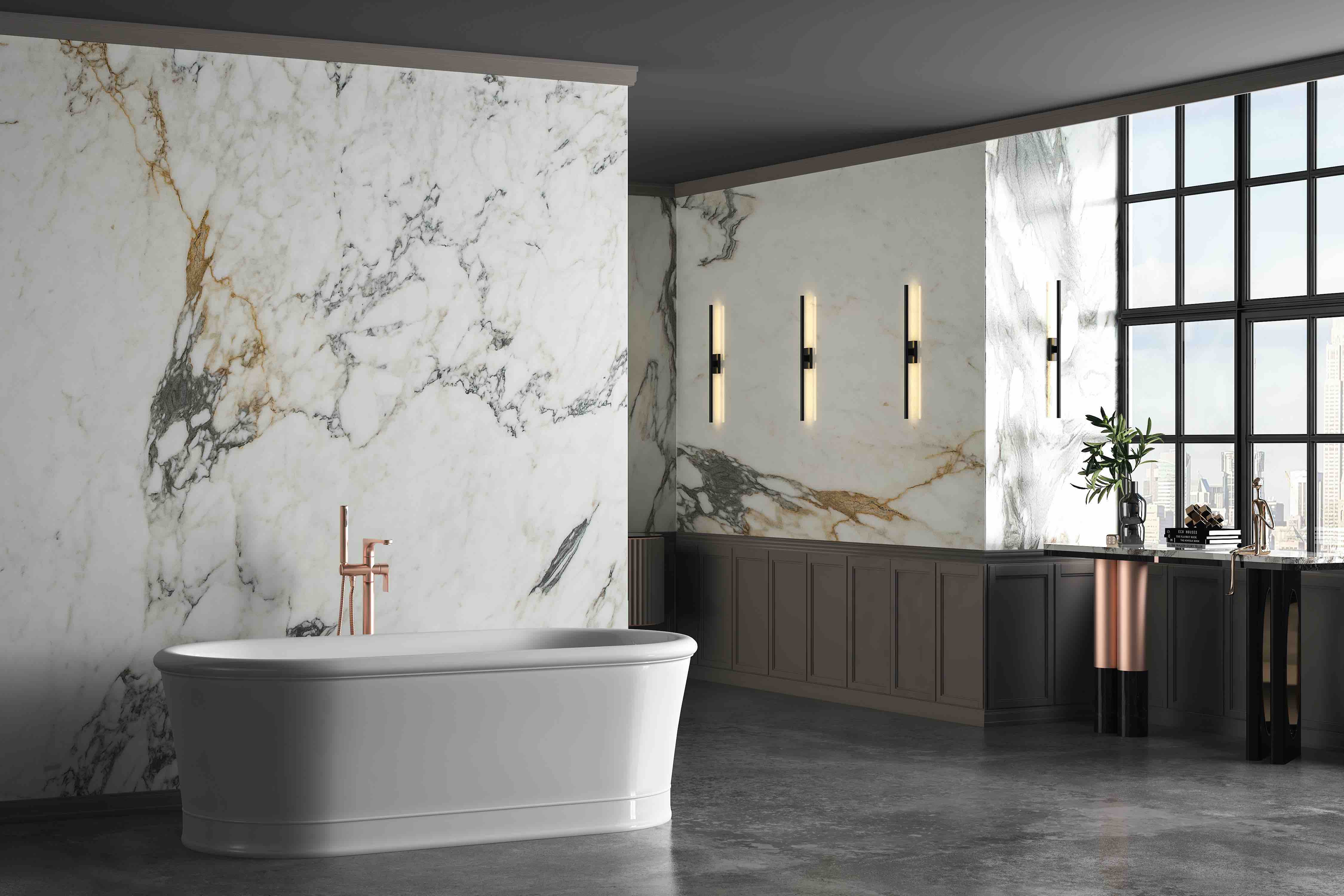
Marble is a magnificent natural stone that has captivated the hearts of artists, architects, and homeowners alike for centuries. Its exquisite beauty, versatility, and timeless appeal have made it a popular choice for a wide range of applications, from grand sculptures to elegant countertops. In this article, we will explore 15 fascinating facts about marble, shedding light on its origins, characteristics, and historical significance.
A Geological Marvel
Marble is a metamorphic rock that is formed from the recrystallization of limestone under intense heat and pressure. It typically originates from the transformation of sedimentary carbonate rocks, such as limestone or dolomite, over millions of years. The geological process results in the formation of interlocking calcite or dolomite crystals, giving marble its distinct beauty and veined patterns.
The Etymology of Marble
The word “marble” derives from the Greek term “marmaros,” which means “shining stone.” This name perfectly encapsulates the lustrous appearance and polished finish that marble is renowned for. Throughout history, marble has been associated with luxury, opulence, and refined taste.
World-Famous Marble Quarries

Marble is quarried from various locations around the world, with each region showcasing its unique characteristics and color variations. Some of the most renowned marble quarries include Carrara in Italy, known for its pure white marble used by famous sculptors like Michelangelo, and the Paros quarries in Greece, which produced the prized Parian marble used in ancient Greek sculptures.
A Diverse Color Palette
While white is often the first color that comes to mind when thinking of marble, this exceptional stone comes in a remarkable array of colors. From classic white and creamy beige to dramatic black, green, and red hues, marble offers endless possibilities for creating stunning visual effects in architectural and design projects.
The Sculptor’s Delight
Marble has been cherished as a sculpting material since ancient times. Its softness and workability when freshly quarried, combined with its ability to retain intricate details and resist weathering, make it an ideal choice for sculptors. Famous sculptures crafted from marble include the iconic Venus de Milo and the graceful Winged Victory of Samothrace.
Marvelous Monuments
Marble has been a favored material for constructing magnificent monuments and buildings throughout history. From the grand Taj Mahal in India, which features exquisite white marble adorned with intricate carvings and precious gemstones, to the iconic Lincoln Memorial in the United States, marble continues to grace the world’s most significant architectural wonders.
The Optical Illusion of Translucency
Certain types of marble, such as the rare and prized varieties from Italy, possess a unique characteristic known as translucency. When a thin slab of translucent marble is backlit, it allows light to pass through, creating a breathtaking visual effect that adds depth and luminosity to architectural features and decorative objects.
Versatile Applications

Marble’s versatility extends beyond sculptures and monuments. Its beauty and durability make it an excellent choice for a wide range of applications in residential and commercial settings. From elegant flooring and countertops to luxurious bathroom vanities and fireplace surrounds marble adds a touch of sophistication and elegance to any space.
The Marble’s Journey
The journey from a block of marble to a finished product is a fascinating process. After the extraction from quarries, the marble blocks undergo various stages, including cutting, shaping, and polishing. Skilled craftsmen use advanced tools and techniques to reveal the stone’s inherent beauty, transforming it into exquisite works of art and functional pieces.
Marble in Ancient Architecture
Marble played a significant role in ancient architecture, symbolizing power, wealth, and artistic prowess. In ancient Greece, marble was highly revered and used extensively in the construction of temples, theaters, and public buildings. The Roman Empire further elevated the use of marble, employing it in the construction of iconic structures such as the Colosseum and the Pantheon.
Marble’s Cultural Significance
Marble has deep cultural and historical significance in various civilizations. From the stunning marble mausoleums of the Mughal emperors in India to the breathtaking marble mosques of the Ottoman Empire, this extraordinary stone has left an indelible mark on the architectural heritage of countless cultures around the world.
Marble’s Modern Resurgence
While marble has always been synonymous with classical and traditional aesthetics, it has experienced a resurgence in modern design. Contemporary architects and interior designers are embracing the beauty of marble and incorporating it into sleek, minimalist spaces, juxtaposing the stone’s timeless elegance with clean lines and modern materials.
The Great Marble Caves

In the heart of Patagonia, Chile, lies a natural wonder known as the Marble Caves. These awe-inspiring formations have been sculpted by the relentless action of the azure waters of General Carrera Lake. The intricate patterns and vibrant colors of the cavern walls create a surreal and ethereal environment that attracts visitors from all over the world.
Care and Maintenance
To ensure the longevity and beauty of marble, proper care, and maintenance are crucial. Marble is a porous stone, which means it is susceptible to staining and etching. Regular sealing, gentle cleaning with pH-neutral products, and avoiding exposure to harsh chemicals can help preserve its pristine appearance for generations to come.
Sustainability and Recyclability
Marble is an environmentally friendly choice for construction and design projects. As a natural stone, it is a sustainable resource that can be responsibly quarried and replenished. Moreover, marble can be recycled and repurposed, reducing waste and giving new life to this magnificent material.
Final Thoughts
Marble’s allure and timeless appeal continue to captivate our imagination. Whether used in ancient sculptures, grand architectural masterpieces, or contemporary design projects, this extraordinary stone leaves an indelible impression. As we appreciate its beauty, let us also cherish and protect the natural wonders that provide us with such remarkable materials.
Frequently Asked Questions (FAQs)
Is marble suitable for kitchen countertops?
Yes, marble is a popular choice for kitchen countertops due to its elegance and durability. However, it is important to note that marble is more susceptible to staining and etching compared to other natural stones like granite. Proper sealing and regular maintenance are essential to keep marble countertops in pristine condition.
Can marble be used in outdoor applications?
While marble is primarily used for indoor applications, certain varieties of marble can be used in outdoor settings. It is crucial to select a type of marble that is specifically recommended for outdoor use, as exposure to harsh weather conditions and UV radiation can cause color fading and deterioration.
How can I remove stains from marble?
To remove stains from marble, it is important to use gentle methods to avoid damaging the stone. Mild dish soap mixed with warm water can be used for general cleaning. For specific stains, such as wine or ink, poultices made of baking soda and water or hydrogen peroxide can be applied and left overnight before gently rinsing.
Does marble require sealing?
Yes, marble is a porous stone and requires sealing to protect it from staining. The frequency of sealing depends on various factors, such as the type of marble, the level of usage, and the specific sealant used. It is recommended to consult with a stone care professional to determine the appropriate sealing schedule for your marble surfaces.
Can marble be repaired if it gets chipped or cracked?
Yes, chipped or cracked marble can often be repaired by professional stone restoration experts. They can fill in the damaged area with color-matched epoxy or resin and polish it to restore the smooth surface. It is advisable to seek professional assistance for such repairs to ensure the best results.
Was this page helpful?
Our commitment to delivering trustworthy and engaging content is at the heart of what we do. Each fact on our site is contributed by real users like you, bringing a wealth of diverse insights and information. To ensure the highest standards of accuracy and reliability, our dedicated editors meticulously review each submission. This process guarantees that the facts we share are not only fascinating but also credible. Trust in our commitment to quality and authenticity as you explore and learn with us.
